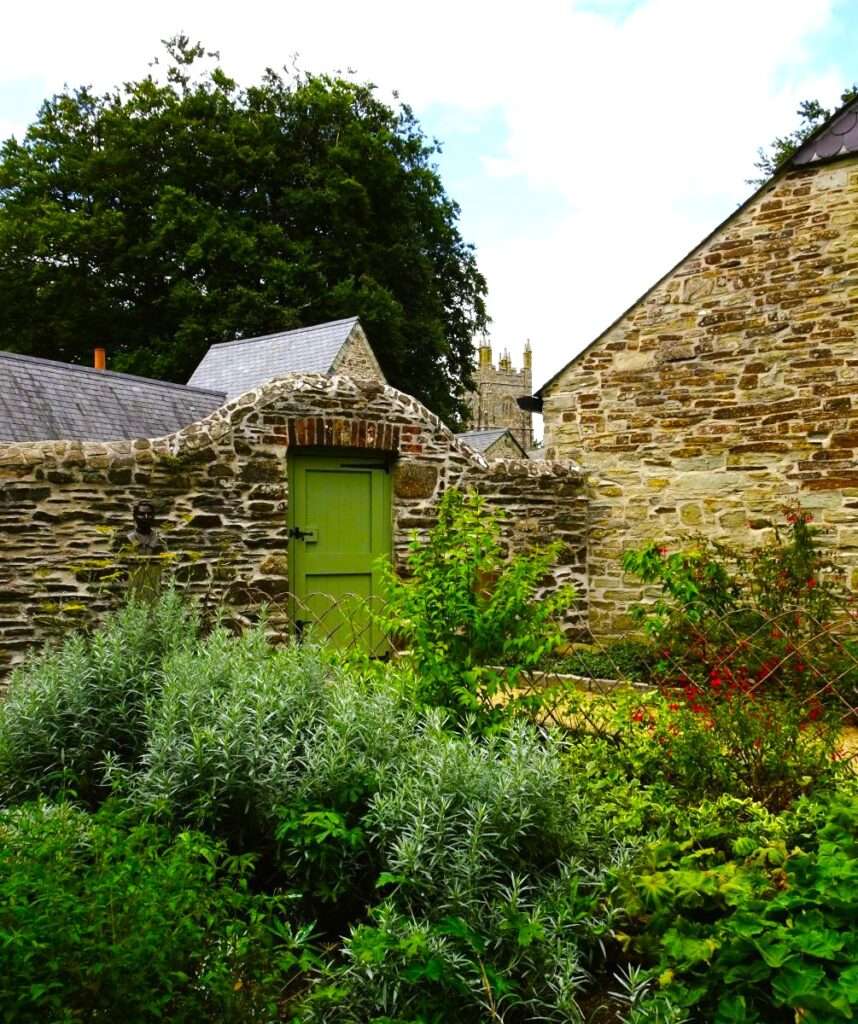Intrigued by a leaflet’s content, I picked it up. It advertised The Story of Emily experience, honouring the 19th-century welfare campaigner and humanitarian’s life. The interactive museum is set in the village of St Ive, East Cornwall. I wondered why I hadn’t heard of it before, especially as I had spent many happy hours selling my ceramics at craft fairs years ago in the church opposite. This is where Emily Hobhouse’s father was an Anglican priest.
Within days, Mr Word Loft and I visited and upon arrival, were delighted by the site’s layout and opportunities. We asked many questions when purchasing an annual pass at the reception counter. It was then that we learnt that it had only opened in 2024.
The gardens are charming, but which of the two main venues on either side should we explore first? It was difficult to decide between The Rectory and The War Rooms, but we opted for the first, where Emily’s life began.
Soon we were donning Victorian carpet slippers and admiring the house, refurbished to the era of 1875. Many features revealed in the restoration have been reproduced, and I was struck by the high standard of decoration and furnishing. The property is surrounded by beautiful flowerbeds, pathways and woodland that have wicker dome-shaped shelters. One is set up with a children’s table and chairs in a glade. Enchanting for the little guests to go inside and play.
Small ponies roaming in a meadow are friendly. Just a tad too friendly in my case, as one nuzzled my gift shop purchase wrapped in a brown paper carrier bag until I slipped by the gate and closed it quickly.
The War Rooms bring history to life and take you on a journey through the 1899 Anglo-Boer War, with immersive technological exhibitions using audio and virtual reality headsets. Some of the information is harrowing, but important to know, and demonstrates the vital part the heroine played in helping in concentration camps established by the British Empire.
On our second excursion there, it was the Fire and Folk Festival. Black and yellow Cornish tartan bunting looped around the marquee and harmonised with dry flowers and sunflower decorations inside. The stage was alive with the energy and unique reverberations of the Celtic folk rock band, Black Friday. And in no time at all, we were jigging along to the rhythm while snacking on lunch of South African sausage and tomato ragu cooked over a fire.
Sipping homemade ginger beer and sitting comfortably on haybales was the best place to watch The WAD, an all-female traditional dance group. Their orangey pink outfits and beribboned net headdresses gleamed in the sun as they twirled and skipped to the sounds of a tambourine, drum and pipe. They ended the performance clunking sticks in time with the music and in celebration of their namesake, Joan the Wad, Queen of Cornish Piskies.
With happy thoughts, we ambled to the crest of a hillock on the estate. Sheep bleated and lazed on the slopes, as we embraced the view over Emily Hobhouse’s childhood home and the surrounding countryside.
Until next time,
Sue. X.
